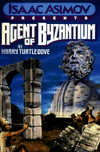Monophysitism (μονοφυσιτισμός; monofysitizˈmos from μόνος monos, "only, single" and φύσις physis, "nature") is the Christological position that, after the union of the divine and the human in the historical incarnation, Jesus Christ, as the incarnation of the eternal Son or Word (Logos) of God, had only a single "nature" which was either divine or a synthesis of divine and human. Monophysitism is contrasted to dyophysitism (or dia-, dio-, or duophysitism) which maintains that Christ maintained two natures, one divine and one human, after the Incarnation.
Historically, the term "Monophysites" (capitalized in this sense) referred to those Christians in the Eastern Roman Empire who rejected the Council of Chalcedon in 451. The monophysite controversy (together with institutional, political, and growing nationalistic factors) led to a lasting schism between the Oriental Orthodox churches on the one hand, and the Eastern Orthodox and Roman Catholic Churches on the other. The Christological conflict among monophysitism, dyophysitism, and their subtle combinations and derivatives lasted from the third through the eighth centuries and left its mark on all but the first two Ecumenical councils. The vast majority of Christians presently belong to the Chalcedonian churches, namely the Eastern Orthodox, Roman Catholic, and traditional Protestant churches (those that accept at least the first four Ecumenical Councils); these churches have always considered monophysitism to be heretical, usually claiming that it implies Christ is neither "truly God" nor "truly man".
Monophysitism in Agent of Byzantium[]
Monophysites were a frequent source of unrest within the Roman Empire.
"Pillar of Cloud, Pillar of Fire"[]
Egypt contained many adherents to this heresy as Basil Argyros discovered when he came to Alexandria to expedite the reconstruction of its pharos. He found he could not officially recognize the heretics but nor could he ignore them either.[1]
"Archetypes"[]
In 1316, the conflict between the Orthodox Church and several heretical sects, including monophytism, was exacerbated by an insidious Persian plot.
"Images"[]
During the Ecumenical Council of 1317, on the issue of Iconoclasm, Arsakios the patriarch of Alexandria raised a clever paradox in opposition to Icons. If an Icon depicts only Jesus Christ's human nature, then it falls into the Nestorian heresy. If it depicts Christ's divine nature then it denies His human nature and so falls into the Monophysite heresy. In either case, Icons become a snare of Satan and should be banned.[2]
Monophytism in Thessalonica[]
For a mercy, the monophysites in Thessalonica remained mostly quiet during the Avar siege of 597, otherwise the city might have been wrecked by religious disputes from within.[3]
References[]
- ↑ Agent of Byzantium, 2018 edition, pgs. 110-111.
- ↑ Ibid., pg. 211.
- ↑ Thessalonica, pg. 38.
| |||||||||||||
| ||||||||||||||
